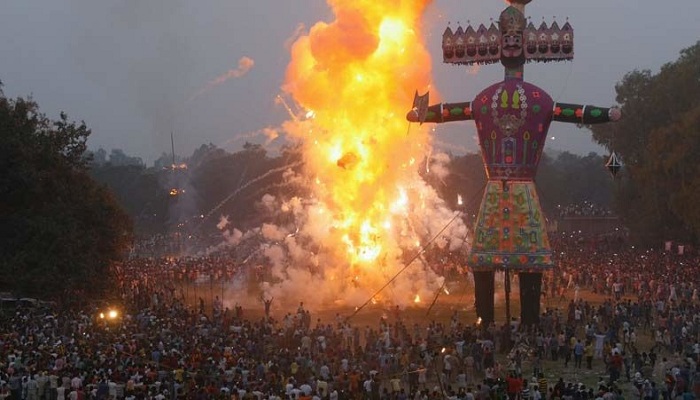
To mark the victory of good over evil, Dussehra is a festival which is celebrated differently in different parts of the country.
Hindu mythology says that the festival is a way to remember the power, braveness, and courage of Goddess Durga who killed the demon Mahishasura. The festival arrives following a nine-day festival of Navratri when people in India perform Durga Puja and offer prayers to 9 avatars of Goddess Durga.
The festivals of Dussehra and Vijayadashami also mark the start of preparations for Diwali, which is celebrated 20 days later. This year Diwali, which is known as the festival of lights will be observed on October 19. Diwali comes exactly 20 days after Dussehra on Amavasya (new moon), during fortnight of kartik, sometime in October or November.
On the day of Dussehra, Ram, killed the great demon Ravan, who had abducted Ram’s wife Sita to his kingdom of Lanka. Ram, along with his brother Lakshman and devoted follower Hanuman, and an army of monkeys fought a great battle to rescue his beautiful wife Sita. The war against Ravan lasted for ten days. Sita had been returned to her husband Ram and they now make their way to Ayodhya in triumph and glory. Thus, it is on the Diwali day that Lord Ram, the incarnation of Lord Vishnu in the Treta Yug, returned to his capital Ayodhya after the exile of fourteen years.
Consequently, to commemorate the return of Ram, Sita and Lakshman to Ayodhya, people celebrate Diwali with the bursting of crackers and by lighting up their houses with earthen diyas. This grand style of celebration has continued, year after year. To this day, the whole of Ramayana is enacted in dramas staged in huge pandals and maidans, in cities, towns and villages, on the occasion of Dussehra and Diwali.
Vijayadashami is observed for different reasons and celebrated differently in various parts of the Indian subcontinent. In the eastern and northeastern states of India, Vijayadashami marks the end of Durga Puja, remembering goddess Durga’s victory over the buffalo demon to help restore Dharma. In the northern, southern and western states, the festival is synonymously called Dussehra. In these regions, it marks the end of “Ramlila” and remembers God Rama’s victory over the demon Ravana, or alternatively it marks a reverence for one of the aspects of goddess Devi such as Durga or Saraswati.
The festival celebrates the victory of light over darkness and good over evil.

Post Your Comments